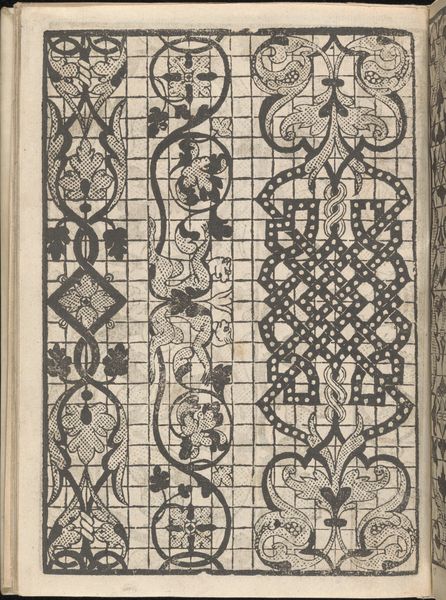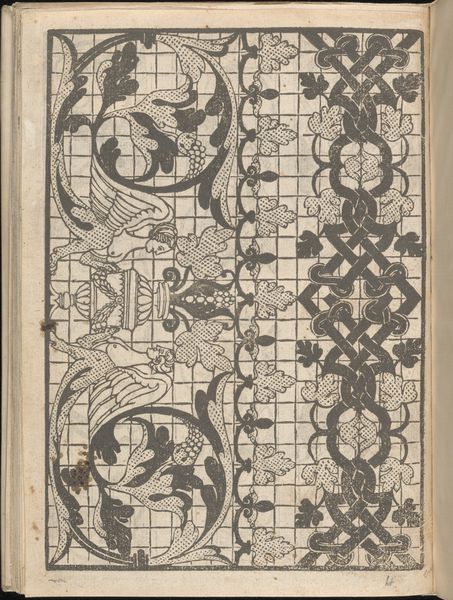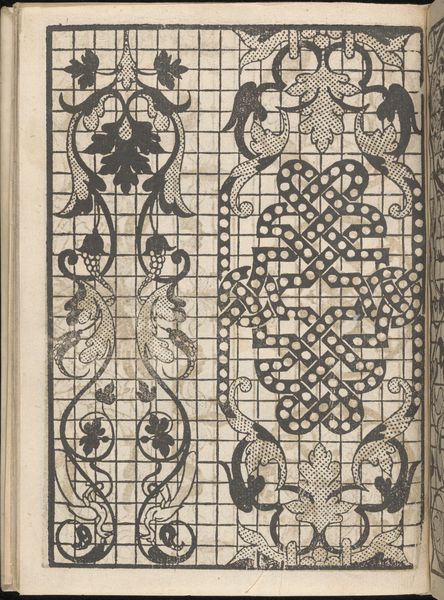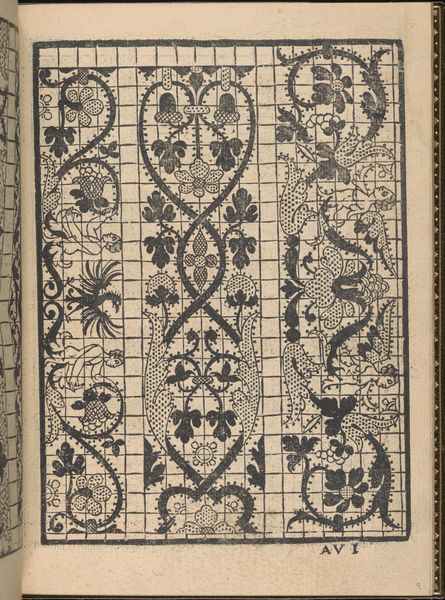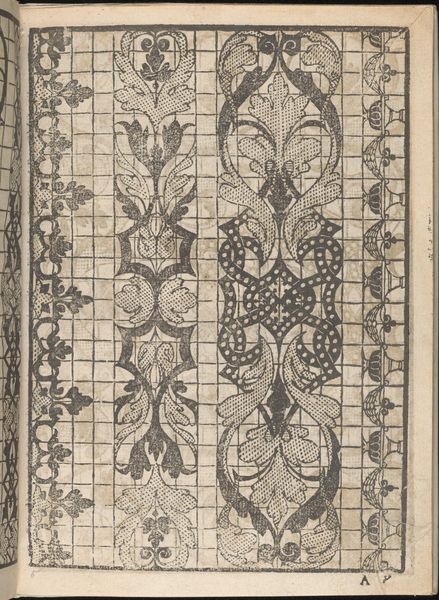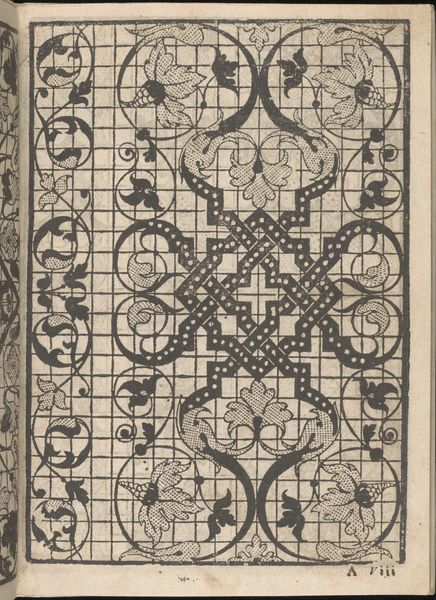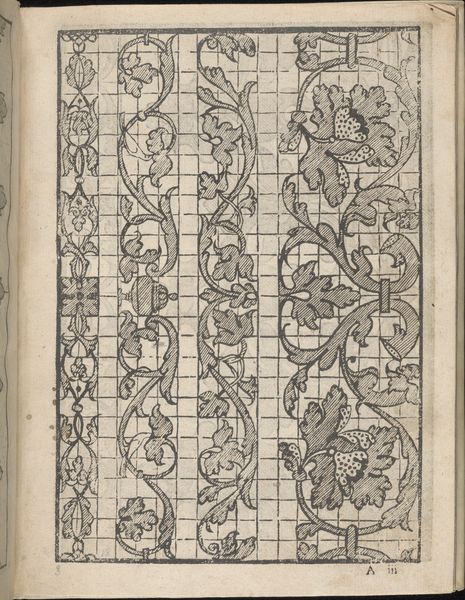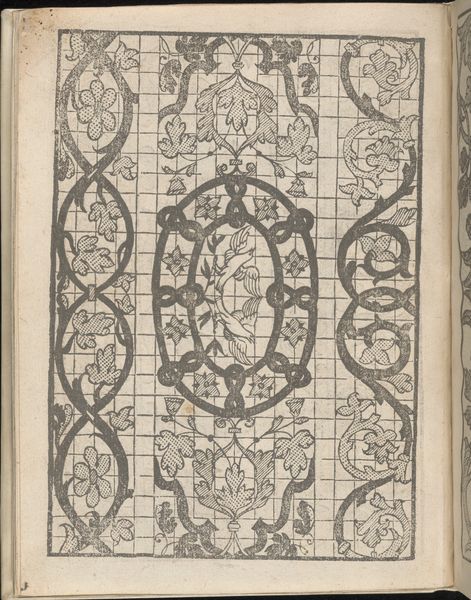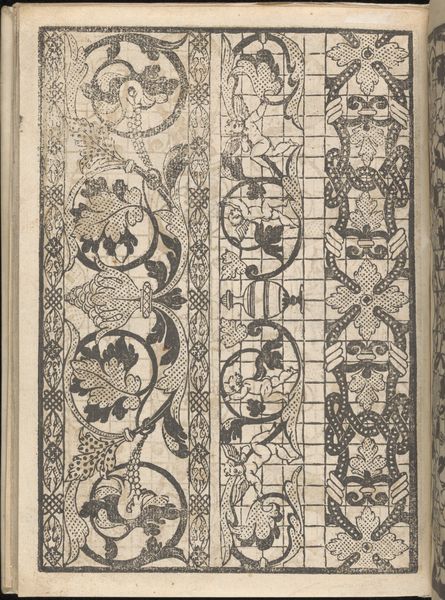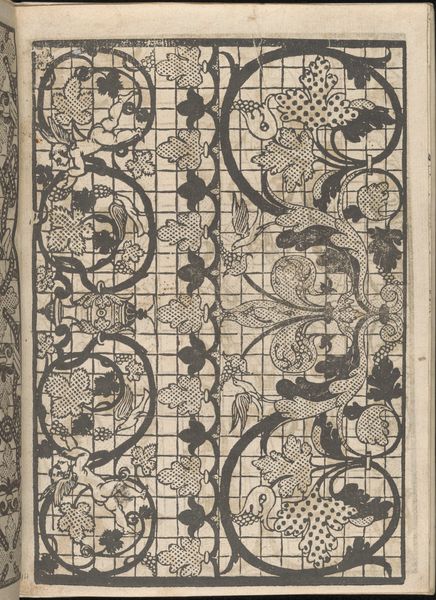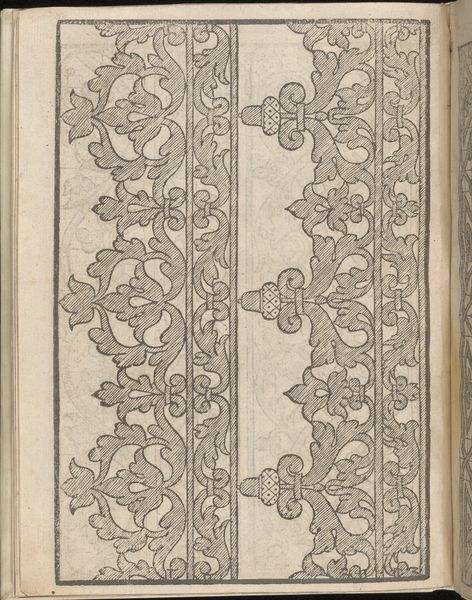
Splendore delle virtuose giovani, page 12 (verso) 1564
0:00
0:00
drawing, ornament, print, ink, woodcut
#
drawing
#
ornament
# print
#
book
#
11_renaissance
#
ink
#
geometric
#
woodcut
#
decorative-art
Dimensions: Overall: 7 1/2 x 5 1/2 in. (19 x 14 cm)
Copyright: Public Domain
Curator: This is a page from Iseppo Foresto’s "Splendore delle virtuose giovani," printed in 1564. It's an ornamental design, executed using woodcut and ink on paper. Editor: My immediate reaction is of austerity. The monochromatic palette, stark geometry, and regimented structure convey a sense of almost severe order. Curator: Indeed. Note the grid system underlying each motif. This reflects Renaissance ideals of order and proportion, aligning with contemporary architectural and artistic principles. Consider the emphasis on linear perspective and harmonious ratios so valued at the time. Editor: And what are the virtue signals at play? Surely, Foresto isn't solely focused on design elements within the page. His virtue-driven framing invites considerations of education as a tool of containment. Are these patterns prototypes meant for virtuous embroidery and needlepoint practice, tethering women to the domestic sphere? Curator: A compelling sociohistorical reading. Though the "Splendore" indeed targets young women, understanding it solely through a modern feminist lens risks overshadowing its engagement with pure visual form. Consider the interplay of positive and negative space, the balance of organic and geometric shapes. Editor: I don't disagree with the intrinsic aesthetic merit, but I'm equally drawn to considering how ornament often naturalizes and reproduces certain hierarchical orders. The very act of beautifying a space or object serves a social function. Curator: Perhaps both aspects co-exist harmoniously. These intricate patterns, beyond their mathematical purity, might symbolize an aspirational world—or a controlled domestic ideal. Editor: And it also gives insight into Foresto’s commercial strategies—catering to wealthy patrons who desired artistic and decorative learning tools that were tied into cultural frameworks about gendered notions of propriety and aesthetics. Curator: Absolutely. Appreciating the fusion of form and context, then, offers a more complete understanding. Editor: Agreed. Thinking critically about the role of virtue helps uncover subtle meanings within this detailed surface.
Comments
No comments
Be the first to comment and join the conversation on the ultimate creative platform.
